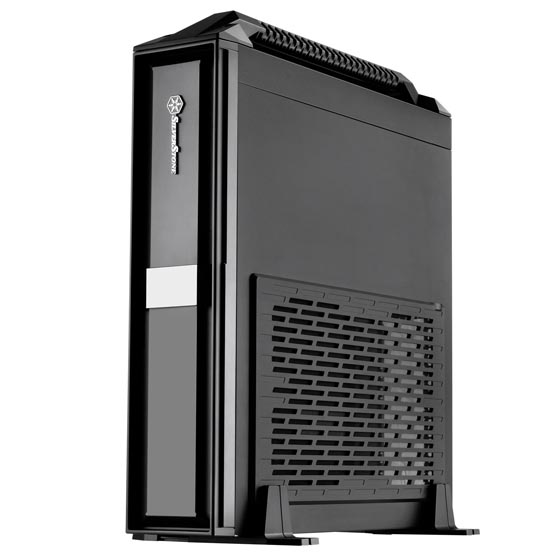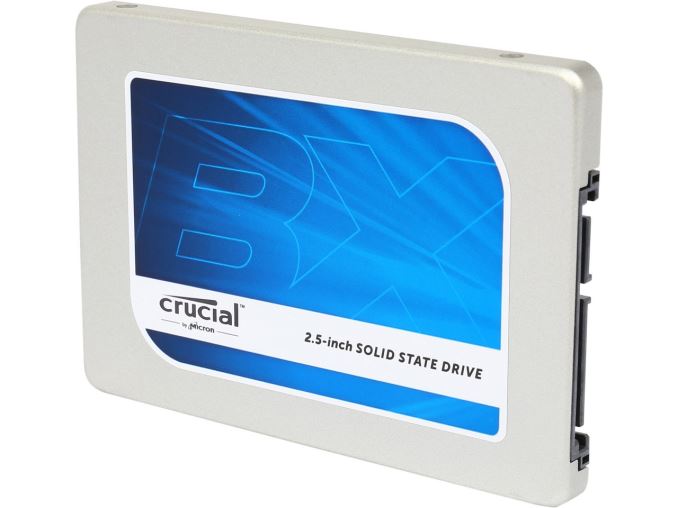Build-A-Rig Round 2: SilverStone and Crucial Interviews and $800 Back-To-School PCs
by Ian Cutress on October 13, 2015 8:00 AM EST- Posted in
- Build-A-Rig
- Crucial
- SilverStone
- Interview

Last quarter we introduced our new Build-A-Rig project. At a high level, we ask two or three companies in the PC industry each round to configure a system to a budget. Then, with our partners Newegg, we build and test each system in glorious battle, along with interviewing the participants about how they approach the industry. Regardless of the winner, all the systems built are given away to our lucky readers. Imagine Top Gear UK’s ‘Star In A Reasonably Priced Car’, but instead of celebrities racing around a track, we let the configured PCs do the racing where both style and performance count. In this round, given the timing as school is starting, we chose SilverStone and Crucial with a budget of $800 for a back-to-school system.
The Rules
When we approach the companies to configure within a budget, there are certain rules they have to follow in order to be fair:
- All components must be available at Newegg.com at the time of selection (so no pre-choosing unreleased parts)
- No combo deals will be considered
- No mail-in-rebates will be considered
- Components must be compatible
- There will be sometimes be a price difference between configuration and giveaway, so a 3% leeway is given on the overall build budget if prices change
- There is no compulsion to use the hardware of who you’re up against
- Each round, we will let the companies competing know who they’re up against, but not the build until it is published on AnandTech
- Each company must agree to an interview on their build
This means that whatever the budget, each participant might end up deciding a different sized build, or a different concept (Steam box or hardcore gaming). As we have found out, it also means that each participant has a stringent choice – either select their best components and perhaps have to reduce the rest of the build to fit the budget, or choose the best performance and only their own mid-or-low range hardware.
Of course, for each build by the companies that actually make the hardware, we also want our readers to chime in with their own thoughts. What would you do differently?
It should be noted that for Round 2, companies were asked to supply builds before September 25th. This makes sourcing Skylake parts somewhat troublesome.
Previous Build-A-Rig Rounds
Here are links to our Build-A-Rig Introduction and previous challengers:
Round 1: $1500 Single Monitor Gaming PC
Corsair's 'The Accelerator', as chosen by Dustin Sklavos (Interview, Breakdown, Build Log, Results)
Zotac's 'Hey Good Lookin', as chosen by Chinny Chuang (Interview, Breakdown, Build Log, Results)
The Contest
This is Round 2 of our glorious project, and given the September-October timeframe, we asked our contestants to produce a specification list for a system that costs $800, with a focus on back-to-school operation. For the parts list, this means the following:
- Processor (CPU)
- Motherboard
- Graphics Card(s) (GPU)
- Memory (DRAM)
- Storage (SSD or HDD, or both)
- Power Supply (PSU)
- Chassis (Case)
- CPU Cooling
- Operating System
- Extras
Obviously there are more elements to a full system than this, particularly when discussing the monitor, keyboard, mouse, mouse mat and other utilities, although we will reserve that choice of rounds with a bigger budget to play with. Something like a monitor is arguably a 10-year lifecycle purchase, whereas keyboards and/or mice are either upgrades from something very simple or replacements when breaks occur.
Because we only specified $800, this opens up how both SilverStone and Crucial have interpreted what this means and we get very different builds focusing on performance and style.
The Participants – Tony Ou from SilverStone Technology
Despite the look of youth, Tony is an industry veteran. We first crossed paths back at Computex 2011, my first major industry event, and I was instantly struck by Tony’s own knowledge about his own product lines and how they fit into the industry as a whole. Every case has a story to tell, and I remember the discussions we had around the push for a Thunderbolt-based graphics dock, as well as some words about the difficulties of producing such a device. Tony is very much into his gaming PC cases as well as the small form factor builds, echoing the sentiment of his employer.
The Participants – Jeremy Mortenson from Crucial (Micron)
The best way to think of Crucial is a brand of Micron, whereby Crucial sells more to end-users and Micron focuses on DRAM IC production, NAND, and business customers. Jeremy covers both, and like Tony he has been in this industry a good number of years and flexes that knowledge to the fullest. This leads to some interesting conversations around the $800 build here, as Jeremy has approached the build somewhat differently for the cooling and OS choice than I suspect 95% of our potential participants would have done. He's also an avid gamer, with a collection stretching back over 20 years of important industry titles.
Up Next: Interview with Tony Ou (SilverStone Technology)













93 Comments
View All Comments
DanNeely - Wednesday, October 14, 2015 - link
It's a lot easier to avoid pinching on specs if you have an extra $100 to play with by not buying an OS.jaydee - Wednesday, October 14, 2015 - link
Without including OS, you're playing by different rules...gamer1000k - Thursday, October 15, 2015 - link
I understand your point, but nowhere in the rules does it say that you have to spend $100 on the OS. There's plenty of ways to legally get Windows for free (especially if you're a student) and even failing that, there's always Linux or a Hackintosh. Anyone who is willing to build a PC (as opposed to buying prebuilt where the vendor got windows practically for free) is likely to be able to take advantage of one of the free OS options.That said, if the $100 OS was a strict requirement, I would drop down to 8GB RAM (single DIMM, not 2x4GB) and an i3 or a lesser GPU (Radeon R7 370 4GB) depending on the use case for the PC.
bliq00 - Friday, October 16, 2015 - link
Not all of us are in school so you can't really omit the Windows license.gamer1000k - Friday, October 16, 2015 - link
This is a "back to school" PC (it says so right in the title) so I felt that would be a fair assumption to make.Mr Perfect - Tuesday, October 13, 2015 - link
Will there be another mITX build-off in the future without such a limiting budget? I'd love to see builds that are limited by the form factor rather then the budget. :)DanNeely - Tuesday, October 13, 2015 - link
I'd expect them to keep going up/down the budget curve as long as the articles are generating enough interest to pay their way; but after the way a large chunk of the commentariat trashed the Zotac build last time around for going for anything other than raw power I'm afraid we'd end up with two virtually identical boxes consisting of an i7 and Titan in a big enough it might as well be mATX case to avoid either broiling their guts or sounding like a heavily loaded fighter screaming off the carrier deck on full afterburner.Mr Perfect - Tuesday, October 13, 2015 - link
Hmm, you could be right about unlimited budgets. Still, something that pushes the limits a little would be nice. Maybe a $1500 build? You could still get an i7 and a nice GPU in a shoebox case for that, but the monster cards would be priced out so as not to turn into hair dryers.DanNeely - Tuesday, October 13, 2015 - link
$1500 was the first build. A lot of people flamed the Zotac build for going for a well balanced system and putting money into aesthetics, while the Corsair assembled the rest of their build around a GTX 980 Ti. While I didn't fully agree with all the details of their build; I did agree that at the $1500 pricepoint a GTX 970 was the more reasonable option unless you already had a >=1440p display. Even there, if you can't add a few hundred more to your budget, having a slightly underpowered GPU for two years is a reasonable tradeoff for having a better balanced system in other aspects for the next 6. (Assuming a 2 year useful GPU lifespan, and replacing the whole system when it ends up on the upswing in the failure bathtub curve.)fokka - Tuesday, October 13, 2015 - link
haha, you're right, it did get a bit ugly in the comments. but i also remember a surprising number of users who preferred the zotac build, so it wasn't all bad.